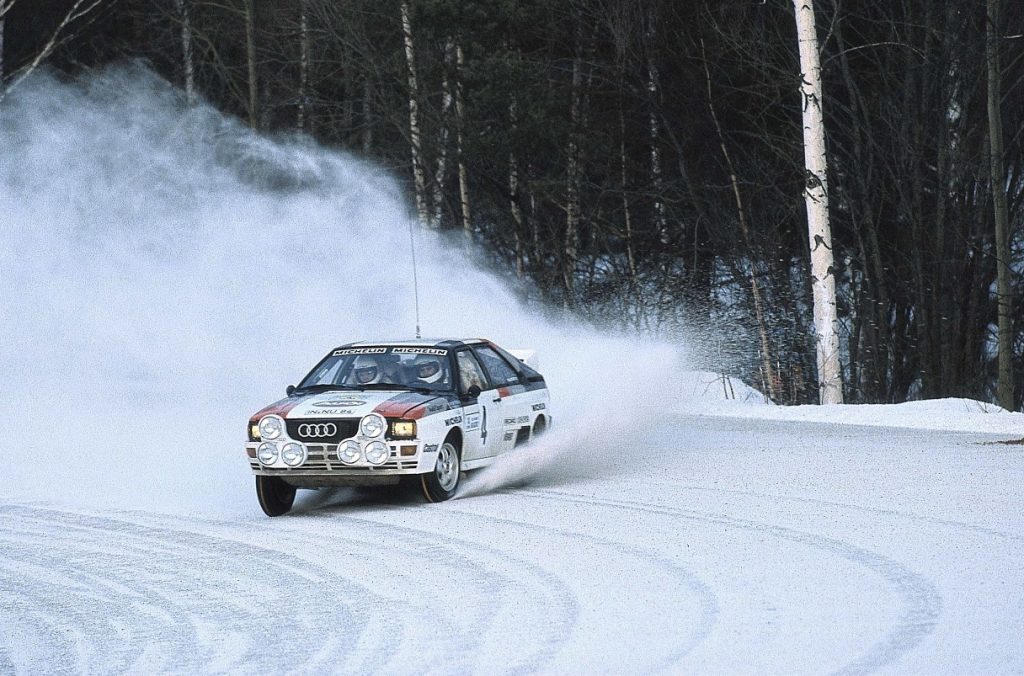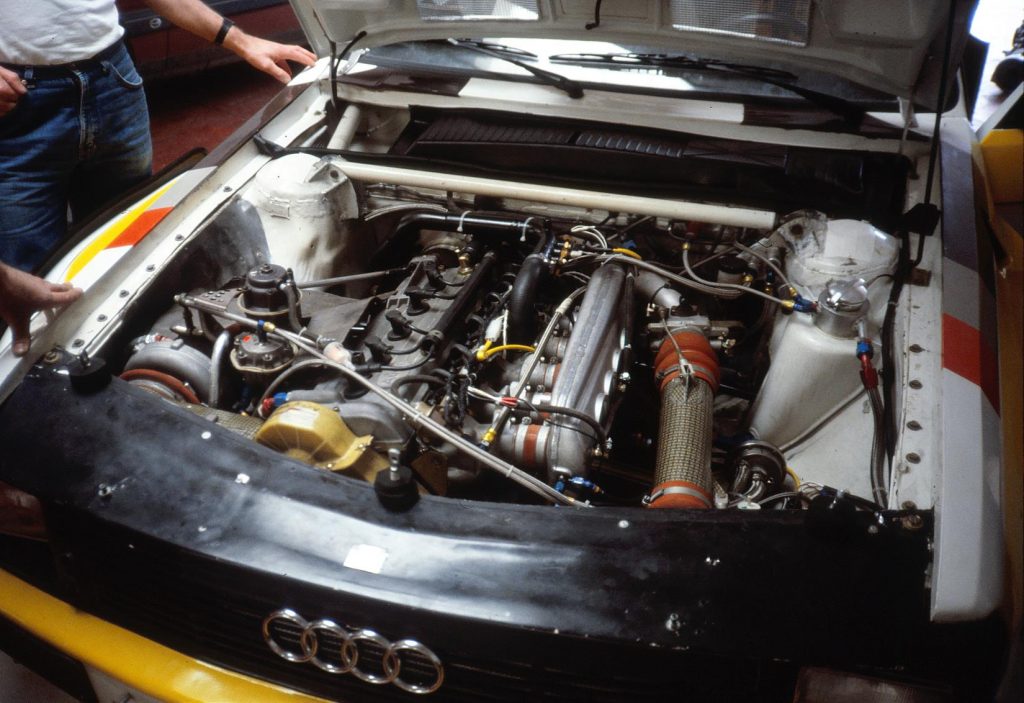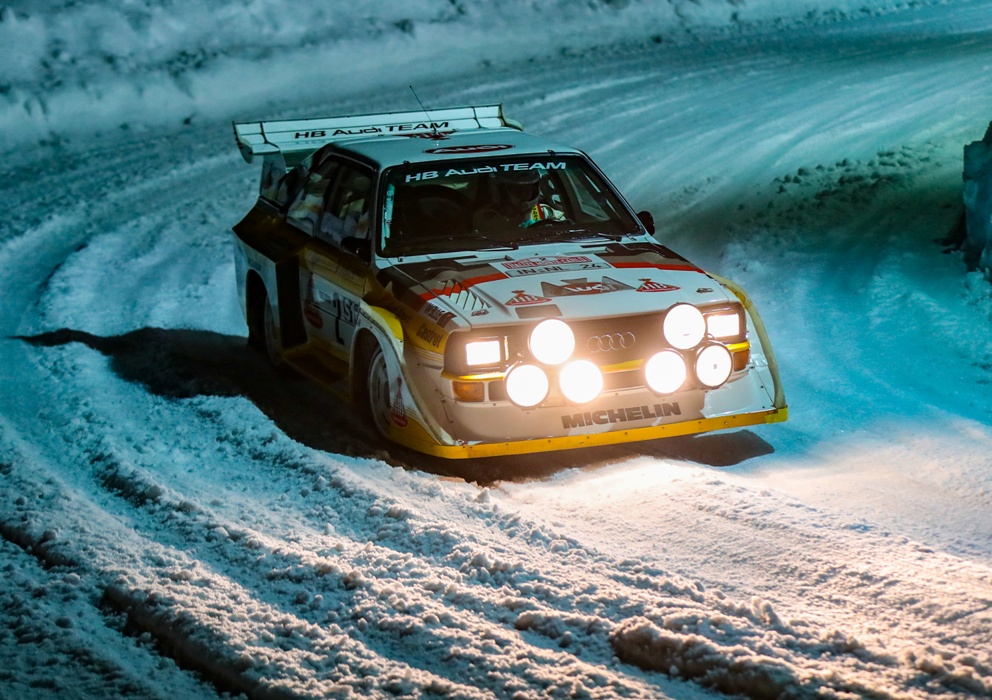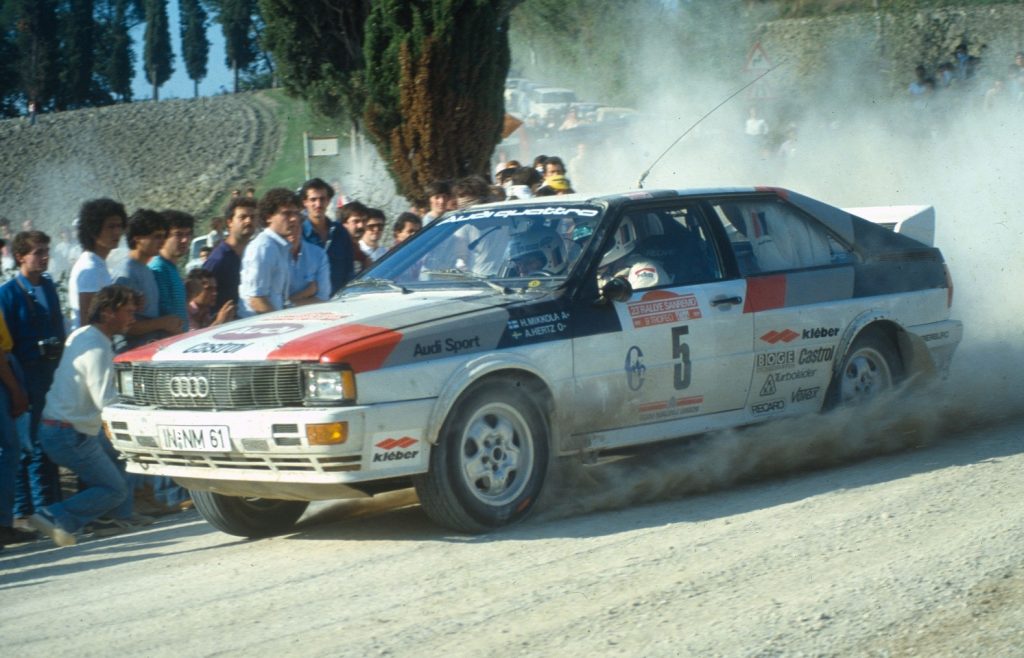40 years of quattro – Part 2
Graham Rood – Route Co-ordinator
Every rally team needs a co-ordinator to make sure cars, mechanics and service vehicles are in the right place at the right time. In the Audi UK team during the successful 1980s, that person was Graham Rood.

‘My job was to make sure that from the moment the car left the workshop until it won the rally, everything went right – that was the theory anyway. It involved creating a detailed route plan and schedule for the rally car, the chase car that would follow it, the management car and the service vans, which I would then go through with co-drivers.
On a five-day event like the RAC Rally with 65 special stages, there would be 300 tyres to look after and maybe fifty service halts to arrange. There’d be fierce competition from all the teams to find farmers who’d let us use their yards to patch-up the cars in the middle of the night. But at the same time, there’d be great camaraderie too; we all knew each other, and we’d help each other out.
Chief mechanic Ron Lumley and I would follow the rally car in an Audi 100 Avant. It only had front-wheel drive at that time, but it was a great car, it soaked up a lot of punishment, and there was plenty of space for spare parts. We were all navigating on OS maps – no sat nav in those days.
One of the most staggering performances was when Walter Röhrl and Christian Geistdörfer came to do the 1984 Ulster Rally in the short-wheel-base 500PS Sport S1 quattro. All the other drivers had been there for days recceing and making pace notes. But Röhrl just wanted to go out for a couple of hours in the dark. He said “OK, I know what these roads are like now,” and he was good to go.
That car was incredible. All the other top drivers would come down and watch it leave the start line. It just squatted down at the back, and with the turbo power and quattro grip, it flew.
Röhrl was up through the gears into fifth before it was out of sight. He was 2.3 seconds per mile quicker than the others and won by four minutes. But as always at Audi, it was a team effort, and everyone played their part.’
Norman Gault – Mechanic
Having worked as a mechanic with the Audi UK rally team during the 1980s, Scotsman Norman Gault helps keep the Audi historic quattro road and competition cars in fine fettle today.

‘The Audi UK quattro rally cars were built by Audi Sport in Ingolstadt, Germany. But when we got them, we didn’t just put them on a trailer and head off to a rally. We modified them to make them easier to work on when we were stuck out in a wet forest.
For example, the cars had six bolts holding each driveshaft on. We took three of the bolts off and replaced them with dowels. We modified things like the exhaust mountings, too, so we could get the prop shaft off quicker and change the gearbox faster. We could do that in 20 minutes. On a modern rally car, of course, it’s a lot quicker, but that time was quite phenomenal back then. And the German team adopted our modifications on their later cars.
Our most potent car was the Sport S1 that we ran at Shelsley Walsh hill climb for Hannu Mikkola in 1986. Audi Germany told us to break the course record – whatever it took. We boosted the engine to just under 700PS. It was astonishing. I have never seen a car leave the line so fast in my life. Hannu could barely change gear quick enough. We broke the record in practice, broke it again during the first run, and then again during the second run.
These days I help look after Audi’s heritage cars. We’ve got a Group B S1 E2 quattro, and when Michèle Mouton came to drive it up the hill at Goodwood, her eyes got so big behind the wheel – she wanted to do everything at maximum attack again, like the old days. All the drivers we worked with – Hannu Mikkola, Michèle Mouton and Stig Blomqvist – were fantastic, and we still have good times when we get together.’
The cars
Audi dominated rallying in the early to mid-1980s with a wide variety of quattro models. The brand’s rally success can be traced all the way back to 1912, when an Audi Type C claimed victory on the Austrian Alpine Rally. It was the first of three back-to-back triumphs at the event for the Type C, and company founder August Horch played a crucial role behind the wheel during this famous hat-trick of wins.

Fast-forward to the modern era: when Audi began rallying in 1978, it was not with the all-wheel-drive quattro, but with the front-wheel-drive 80 model. This was the perfect way to get the team match-fit for the arrival of the quattro and a full assault on the World Rally Championship (WRC) in 1981.
The original quattro – or ‘Ur’ quattro, as it is known in Germany – was initially rallied under Group 4 regulations in 1981. The first Group B quattro appeared in 1983 and was known as an A1 quattro, with the more powerful A2 version following soon after.
All three versions of the quattro were rallied successfully by the Audi UK team. In 1983, Stig Blomqvist used both the A1 and A2 to win the British Rally Championship, before becoming world champion with Audi the following year. The 1983 British championship also saw Harald Demuth campaigning a four-door saloon 80 quattro.
The short-wheelbase Audi Sport quattro S1 made its UK debut on the 1984 Ulster Rally, where Walter Röhrl blitzed the opposition. By 1985, the winged Sport quattro S1 E2, the ultimate rally quattro, had replaced the S1 on the world stage.
Audi UK ran an S1 E2 for Michèle Mouton on two events in 1985. However, the team continued to find further success by campaigning the S1, winning the National Breakdown and Welsh rallies with Hannu Mikkola in 1986.
After the ultra-powerful Group B cars were banned at the end of 1986, Audi UK signed David Llewellin to drive a Group A Coupé quattro in 1987. The car still had the advantage of all-wheel drive, but its five-cylinder engine lacked a turbocharger. A win on the Scottish Rally and second on the Circuit of Ireland were its best results in that year’s British Rally Championship.

Audi Sport debuted its 200 quattro on the 1987 Monte Carlo Rally, where Röhrl finished third. Three months later, Mikkola won the Safari Rally, chased home by Röhrl in second. The big executive saloon was also campaigned by Audi UK in 1988, while an Audi 90 quattro also appeared on events in Europe around that time.
The Audi UK team withdrew at the end of the 1988 season, returning to the rally stages in 1993 with a Group N Coupé S2 quattro for Shell Scholarship winner Jonny Milner. The Yorkshireman scored an impressive fifth place overall in the GrpN machine on the Pirelli International Rally.